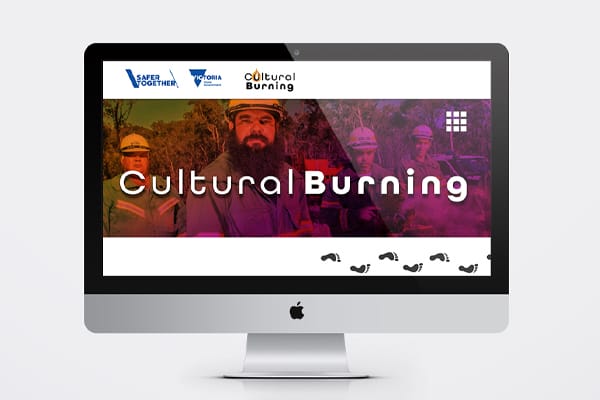Cultural Burning
A Cultural Burning Resource Hub

Cultural Burning
Cultural Burning Knowledgehub
This resource hub maintains a growing collection of key resources from around the world highlighting the latest research, knowledge, and articles related to fire management. These online resources include videos, the latest articles, strategies, policies, and procedures, international academic papers, audio files, excel spreadsheets, and PDFs.
Website Functionality
- Advanced search so users can search and filter resources based on their needs via predictive search ie. Type the first 3 letters and the relevant resource will appear making searching quicker and easier.
- Calendar of Events
- Download resources as a PDF
- Analytics on all resources so DELWP admin can keep tally on the number of resources downloaded
- Easy to read layout and user experience
- Multiple user access

What is Cultural Burning?
Cultural Burning is a traditional practice of working within the Australian landscape to create different fire intervals across country for fuel and hazard reduction (often referred to as patch burning or cool burning).
Cultural burning can include burning or prevention of burning of country for the health of particular plants and animals such as native grasses, emu, black grevillea, potoroo, bushfoods, threatened species or biodiversity in general. It may involve patch burning to create different fire intervals across the landscape, or it could be used for fuel and hazard reduction.
The Safer Together Project
Victorian communities have an expectation that land and fire management work together, and with the broader emergency management sector, to mitigate fire risks and increase safety. This involves:
- Integrated planning for bushfires, involving all agencies and communities, to decide the right mix of risk management strategies. These might include a mix of land use planning and controls, fire response strategies, the availability of fire refuges, fuel management, and other management options
- Land and fire agencies working together to plan and deliver a fuel management program on public and private land
- Greater CFA involvement in burns on public land, including local brigade participation and access to shared resources, vehicles, and other equipment.
